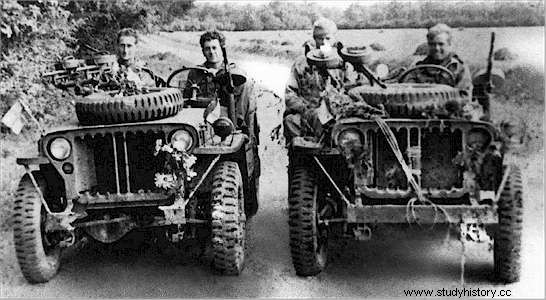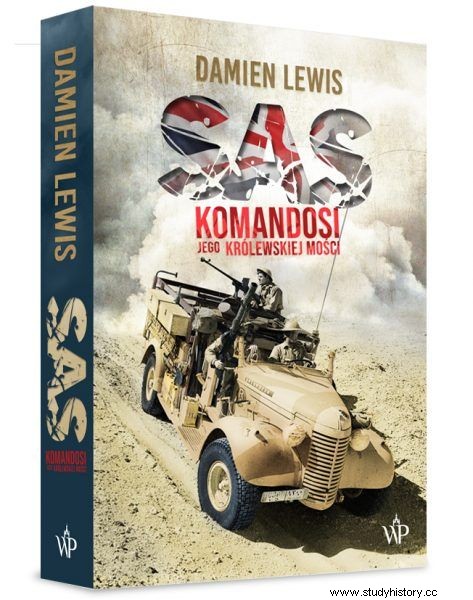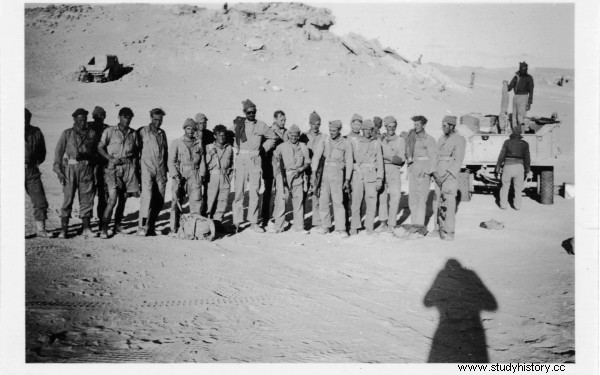At least 48 operations, over 330 soldiers lost, 7,000 enemies killed or wounded, hundreds of plane wrecks left behind. In this "style" the soldiers of one of the most elite commando units today - SAS - were accelerating in their "childhood" (World War II). The beginnings were difficult - defective parachutes, incorrect intelligence, defective machines. Today? There is still no drone invented with abilities that surpass the SAS commandos.
Operation "Squatter"
The 24 hours preceding the start of Operation Crusader (November 18, 1941) were not the easiest for the Allies. The most famous fiasco associated with this moment today was Operation Flipper, during which an unsuccessful attempt was made to kill Erwin Rommel (or in his absence, Major Schleusener). As it turned out later, the Desert Fox was not even in North Africa that day. David Striling's commandos were also to play a role in this. It was supposed to be a modest overture of an opera full of parachute jumps, explosions and daring raids.
Striling was given a simple task:he was to neutralize as many enemy planes as possible at airports in the Tobruk area (Tmimi and Gazala airports). Five Bristol Bombay-class units flew into the air on the night of November 16, taking 65 men with them. It started tragically - one of the machines was shot down, which reduced Striling's squad by 13 people. The commandos were not helped by the wind and driving rain that accompanied them practically from the very beginning. Finally, the jump - one of the soldiers mentioned that disentangling from the parachute in these weather conditions was more like "a task for Houdini" . 11 supply caches were dropped in front of Striling's squad, but only 2 were found. The task became almost unreal when, after landing, Striling realized that they were in a completely different place and reaching the airports in the allotted time (even if he abandoned the rest of the squad) was impossible. On November 17, Captain Easonsmith of the LRDG picked up Striling's 21 resigned men, and the first operation of the bold idea of a British High Officer of the British Army ended in a total failure.

Major Fraser's commandos during operation in France (Operation Houndsworth)
"Green room" to calm down.
Less than two weeks after the failure of Operation Squatter, Striling managed to convince the Allied Command to approve a similar action. And this time it was about harassing the enemy on his territory through the actions of "ghosts" blowing up Italian and German machines at airports in North Africa. David Striling believed that the operation in the Tobruk area taught him, above all, humility in terms of the variability of the weather, as well as navigation during night operations. Instead of a parachute jump, the SAS commandos were transported to the site by LRDG troops. As it turned out, it was a much better idea. The biggest problem at one point was ... no bombs. Italian airports in Libya were not famous for their extremely tight and solid defense. As a result, 61 machines were destroyed, although the last few fell victim to improvised charges, for the preparation of which the commandos used everything they had at hand. Sergeant Bob Bennett recalled that one of the soldiers, when he ran out of bombs, entered the cockpit of the enemy machine and tried to do as much damage as possible in it . It was the first, timid success of the new commando unit, which quickly found its way to Rommel, and eventually even to Berlin. After further actions of this type, SAS soldiers were placed under the famous "Commando Order".

Part of a great whole
What kind of elite would SAS be if they missed all the "fun" of D-Day? The target of the British paratroopers was the Dijon area, where French guerrillas operated. Major William Fraser was the commander of Operation Houndsworth. The goal of his 144-strong detachment was to land on enemy territory, establish contact with the Resistance Movement, cut off supply lines (railroads, transports of weapons to the north). For this task, the commandos received an additional 9 jeeps and 3 76mm mortars. As the drop preceded the actual beginning of Operation Overlord, Fraser's commandos got rid of all badges, but most of all - they left their precious red berets in England, by which they could be identified. The drop was carried out with typical problems for that night (strong wind, enemy fire, rain). The commandos landed in the Morvan area between Dijon and Nevres. It was probably one of the few paratroopers that night during which most of the troops had hit their target. Probably one of the planes crashed during transport. 14 commandos were killed there.
 publicdomain
publicdomain
Thanks to the excellent knowledge of the terrain of the résistance forces cooperating with the SAS, the "hunt for the Germans" organized by the Allies on the threshold of Operation Overlord was a bit like playing cat and mouse. As Sergeant Arthur Wood recalled, "(...) thanks to our cooperation with the French underground, we were always one step ahead of the Germans." The conditions were not the easiest, because very soon there was a shortage of medicines, and most of the nights they spent outdoors, with their heads on hard chests. They stayed at the front much longer than originally planned, as the Allied offensive in northern France was dragging on. However, this did not prevent them from using this time properly. By September 6, they identified 30 targets for the RAF, blew up 22 railroads, destroyed at least 70 enemy vehicles, killed or injured at least 220 soldiers, and liberated around 3,000 members of the French Resistance. Fraser lost "only" 18 people during this time (of which 14 during the airdrop).

Inheritance
SAS commandos remained on the front of World War II until the end of its operations on the European front. One of the last operations carried out in northern Germany was Operation Howard, the purpose of which was reconnaissance for the Canadian 4th Division. After the war, the SAS was reformed in 1947, and three years later its troops landed in the midst of the Korean War. To this day, they conduct operations all over the world. Wiseman Lofts in the book "SAS. Survival School, "described in a very blunt manner the difficulties that each candidate must face to shout" Who Dares Wins "(SAS motto), just as David Striling dared in November 1941 to jump out of a plane over Africa in search of enemy airfields. SAS founder died on November 4, 1990, at the age of 75.
